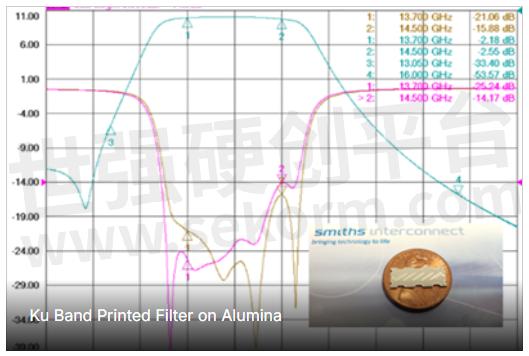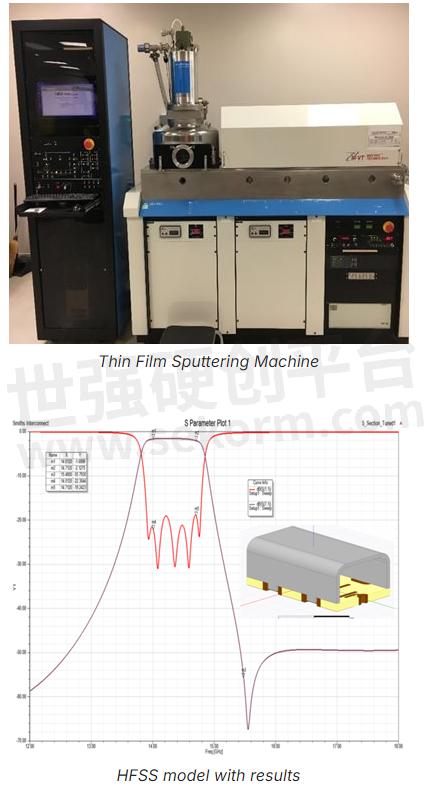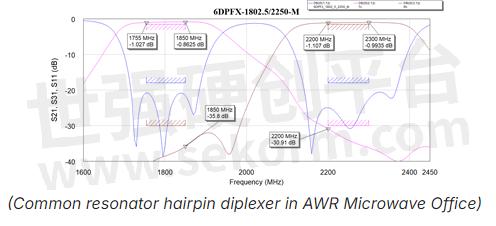Planar Filters Continue to Advance

A primary goal of every RF subsystem today is size reduction — without reducing performance and without increasing cost — while operating at millimeter-wave frequencies that have been only sparsely occupied until now. So, it is interesting that long before surface acoustic wave (SAW) and bulk acoustic wave (BAW) technologies reduced the achievable size of Filters by orders of magnitude, the Microstrip filter has been doing the same thing since 1952. They remain one of the most important types of filters in engineers’ toolkits, and they have been enhanced over the years through the use of various dielectric substrate materials and design techniques.

Microstrip filters are considered planar because they are constructed using flat two-dimensional microstrip resonators on a dielectric substrate. Generally speaking, they offer similar performance to their larger counterparts built with discrete components that must be tuned by hand to achieve the desired results. They also have the advantage of being much smaller, well suited for high-volume manufacturing, and available on tape-and-reel, are at least an order of magnitude smaller, and when realized in thin film can achieve similar unloaded Q.

Although microstrip transmission lines are the most common, coplanar waveguides and stripline are also used and can, in some cases, produce better performance. As they are inherently planar and suitable for high dielectric substrate materials, they can also be integrated with gallium arsenide and gallium nitride bare die to reduce a circuit’s footprint. In addition, 3D design tools allow Planar Filters to be designed and immediately moved to prototype and then production very quickly.
Over the many years that this type of filter has been used, hundreds and perhaps thousands of variations have been developed, each created to optimize one or more performance characteristics. The result is that low-pass, high-pass, bandpass, and bandstop (notch), diplexers, multiplexers, dual-mode filters, and switched filter banks are available frequencies well into the millimeter-wave region.

There is almost no limit to the filter designs that can be built using a PC board pattern cut with hairpin curves, straight lines of varying widths, and other geometric arrangements alone or in combination. Some microstrip bandpass filters can simultaneously handle two or more frequencies and include notch filters as well. This would be difficult or impossible using other types of filter structures.
Although planar filters can use air as a dielectric to reduce losses, they are typically fabricated using a solid dielectric substrate on which a metal filter circuit layer is placed, with the main ground layer on the underside of the dielectric. Epoxy-based material such as FR4 can be used below 1 GHz for filters with large relative bandwidths, and PTFE-based material is also common. However, ceramics such as alumina as well as barium titanate provide significant benefits at higher frequencies.
A good example of a planar filter is Planar X technology available from Smiths Interconnect, which is currently available for frequencies up to 30 GHz although development work is continuing to reach even higher frequencies. In a typical bandpass configuration, bandwidths can span from 5% to greater than 100%, depending on circuit configuration, and achievable rejections can be more than 30 dB with low insertion loss, return loss of 15 dB, and power handling of up to 20W.
These miniature, economical RF filters are fabricated with thick film process technology on various dielectric and are ideal for harsh environments.
While their size varies, they can be made as small as 0.1-inch x 0.1 inch, and, depending on the requirements, Planar X filters can be fabricated with either thin-film or thick-film processes, as well as alumina, barium titanate and other substrate materials. The company’s technology and testing capabilities allow the filters to meet high-reliability requirements typically mandated for use in aerospace and defense systems, and a wide degree of customization is also achievable.

Planar filters are also an excellent choice for use in switched filter banks as they can save considerable board space because their filters and switches are integrated within a single module. They also eliminate transitions between circuits to allow optimal matching with the result that insertion loss, flatness, and VSWR are optimized, and internal channelization provides high rejection and isolation. Not surprisingly, these filter banks continue to be used throughout the defense industry for applications such as radar warning receivers, Signal Intelligence and Communication Intelligence (SIGINT and COMINT) receivers, as well as broadcast and satellite communications systems.

Summary
Along with waveguide, the humble microstrip filter, even though it originated at least 75 years ago, continues to demonstrate its capabilities and is likely to maintain its importance as commercial and defense systems move into higher regions of the spectrum. They will achieve this in the face of competition from more modern technologies because they are smaller than all other filter topologies, surpassed only by MEMS filters that have just recently entered the marketplace. In addition, the processes used to manufacture them are similar to those used for fabricating PC boards, they can be customized to meet a broad array of requirements and their characteristics have been verified through thousands of designs.
Research into microstrip filters continues, and while the microstrip line is still their primary transmission medium, coplanar waveguide, and slotted ground structures are also being enhanced to achieve greater miniaturization and, in some cases, higher performance. There is also interesting research being conducted into microstrip lines within periodic structures that prohibit wave propagation at certain frequencies, including photonic bandgap, electromagnetic bandgap, and defected ground structures. The latter has the advantage of being achievable by etching only a few areas on the ground plane below the microstrip line and is created in the form of an etched-out pattern on the ground plane.
In short, there appears to be no end to the uses for microstrip filters, even though systems overall are decreasing in size and operating frequencies are increasing well into the millimeter-wave region.
Smiths Interconnect filters are available to suit a wide range of applications in the military, commercial and aerospace fields. For more information, please see the notes for each filter topology. Superior performance is achieved through the use of high "Q" components and computer modeling.
- +1 Like
- Add to Favorites
Recommend
- Planar Filter Technology for Millimeter Wave Applications
- 5 Key Reasons to Choose a Planar Filter Over Conventional Filter Technology in Your Next RF Design
- Smiths Interconnect Announced Planar X Series of RF Filters with Highpass Configurations up to 18GHz (Ku Band)
- Smiths Interconnect New Lowpass RF Filter Solutions in the X Band Ideal for Radar, SATCOM, and Satellite Industries
- ATP Offers 3D NAND Flash in Various Form Factors With Capacities Ranging From 128 Gb to 1 Tb, Better Than Planar Nand Solutions
- Planar SMD Zener Diode ZMM3.3 Help to Run the Battery Powered Toy Even Longer
- Maplesemi‘s 60V/80A N-Channel MOSFET SLD80N06T Using Advanced Planar Stripe TRENCH Technology
- Smiths Interconnect Offered Isolators to Support NASA’s Europa Clipper Mission to Explore Jupiter’s Moon
This document is provided by Sekorm Platform for VIP exclusive service. The copyright is owned by Sekorm. Without authorization, any medias, websites or individual are not allowed to reprint. When authorizing the reprint, the link of www.sekorm.com must be indicated.





























































































































































































































































































































































































































































































































































































































































































































































































































































































